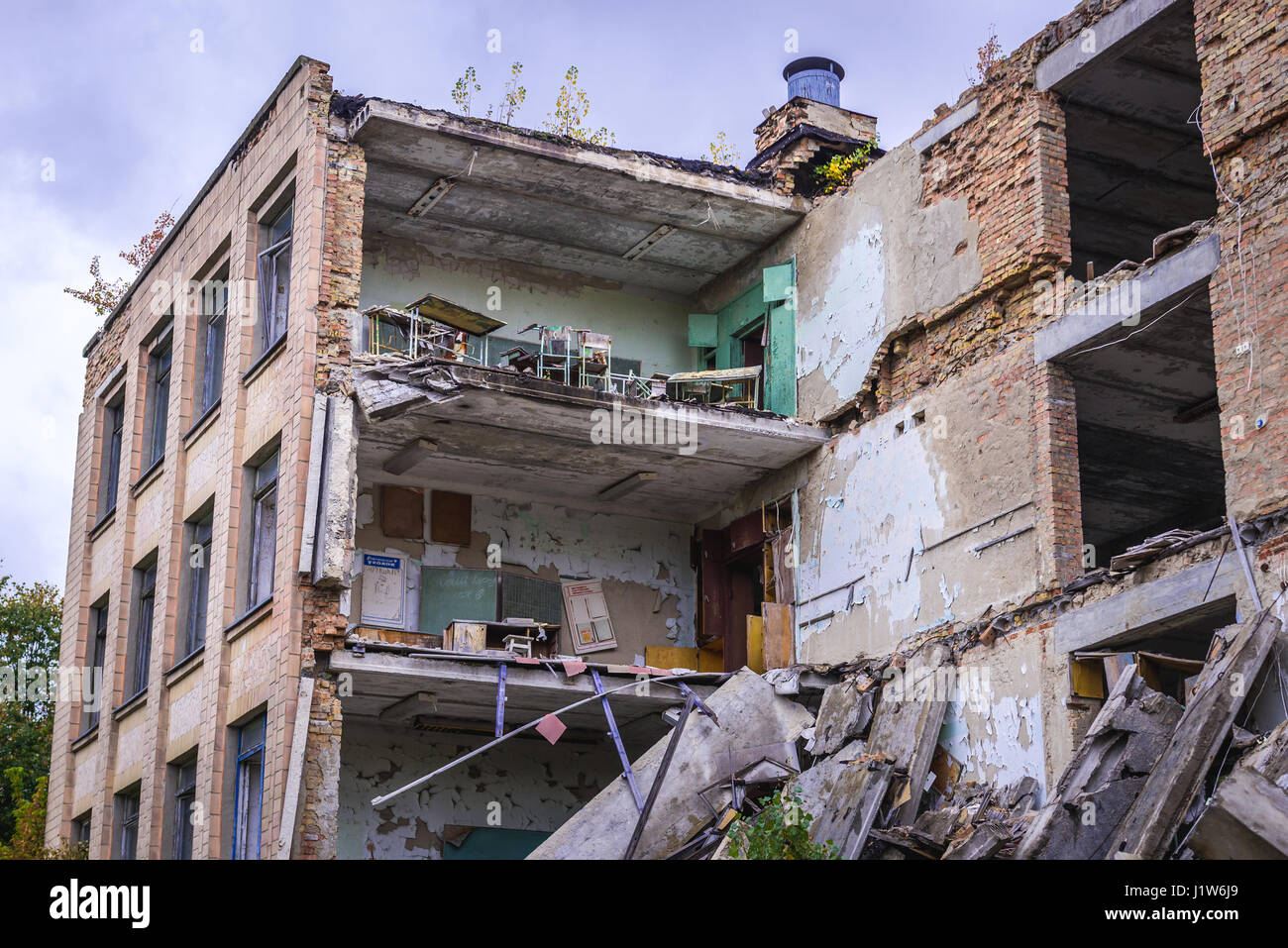
#CHERNOBYL AFTERMATH BUILDINGS CRACKED#
This wall is reinforced concrete and was cracked by the accident.ĭesigned stabilisation steel structure The western end of the shelter roof is supported by a wall at a point designated axis 50. The "Mammoth Beam" that supports the roof of the shelter rests partly on the structurally unsound west wall of the reactor building that was damaged by the accident. The present shelter is constructed on top of the ruins of the reactor building. Ongoing issues View of the sarcophagus in 2005 Filtration systems have been put in place so that no radioactive material will escape through these holes. In many places the structure was designed to have ventilation shafts to allow some convection inside. The sarcophagus has over 60 bore holes to allow observation of the interior of the core. On 11 October 1986, the Soviet Governmental Commission accepted a report entitled: "Conclusion on Reliability and Durability of a Covering Constructions and Radiation Safety of Chernobyl NPP Unit 4 Reactor Compartment". The building ultimately enclosed 740,000 cubic metres (26,000,000 cu ft) of heavily contaminated debris inside, together with contaminated soil. More than 400,000 cubic metres (14,000,000 cu ft) of concrete and 7,300 tonnes of metal framework were used during the erection of the sarcophagus. The installation of a ventilation system.Erection of supports and installation of a reactor compartment covering.


The seams of the sarcophagus, however, could not be fully sealed. Due to high radiation levels, it was impossible to directly screw down the nuts and bolts or apply any direct welding to the sarcophagus, so this work was done remotely where possible. Subsequent construction lasted for 206 days, from June to late November of the same year. The design of the sarcophagus started on, 24 days after the disaster. Preparatory steps for mounting the sarcophagus in 1986 JSTOR ( May 2017) ( Learn how and when to remove this template message).Unsourced material may be challenged and removed.įind sources: "Chernobyl Nuclear Power Plant sarcophagus" – news Please help improve this article by adding citations to reliable sources in this section. This section needs additional citations for verification.

It was decided that the sarcophagus would be replaced with the New Safe Confinement, construction of which was completed in 2017. Internal radiation levels were estimated to be as high as 10 000 röntgens per hour in certain areas (normal background radiation in cities is usually around 20–50 microröntgens per hour, and a lethal dose is 500 röntgens over 5 hours). īy 1996 the structure had deteriorated to the point where numerous stabilization measures were required. The sarcophagus locked in 200 tons of radioactive lava-like corium, 30 tons of highly contaminated dust and 16 tons of uranium and plutonium.

The original Russian name is Объект "Укрытие" ( Obyekt Ukrytiye), which means sheltering or covering, as opposed to sarcophagus. It is located within a large restricted area known as the Chernobyl Exclusion Zone. The sarcophagus was designed to limit radioactive contamination of the environment following the 1986 Chernobyl disaster, by encasing the most dangerous area and protecting it from climate exposure. The New Safe Confinement is designed to protect the environment while the sarcophagus undergoes demolition and the nuclear cleanup continues. Currently the sarcophagus resides inside the New Safe Confinement structure. The Chernobyl Nuclear Power Plant sarcophagus or Shelter Structure ( Ukrainian: Об'єкт "Укриття") is a massive steel and concrete structure covering the nuclear reactor number 4 building of the Chernobyl Nuclear Power Plant. Chernobyl Nuclear Power Plant Shelter Structureĭeteriorated succeeded by Chernobyl New Safe ConfinementĬovering Reactor 4 of the Chernobyl Nuclear Power Plant, within the Chernobyl Exclusion Zone, near Pripyatĥ1☂3′23″N 30☀5′56″E / 51.3896°N 30.0990☎ / 51.3896 30.0990


 0 kommentar(er)
0 kommentar(er)
